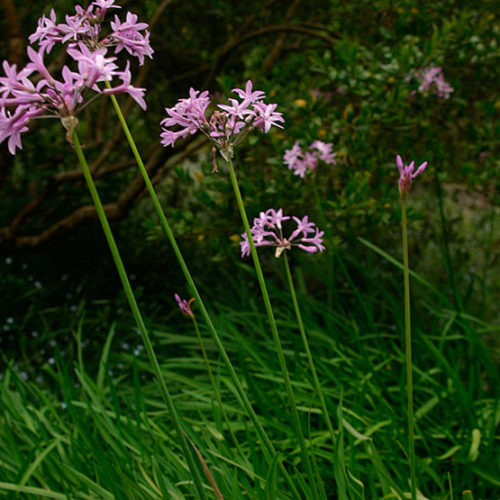Agapanthus Care Tips for Lush and Vibrant Flowers
Agapanthus Care Tips for Lush and Vibrant Flowers
Blog Article
Mastering the Art of Agapanthus Care: Necessary Actions for Healthy Growth and Lively Blossoms
In the realm of gardening, the cultivation of agapanthus stands as a rewarding venture for those who seek to support these stylish flowering plants. With their striking flowers and graceful vegetation, agapanthus has actually caught the interest of gardeners worldwide. Nonetheless, accomplishing ideal development and dynamic blossoms requires a nuanced approach that incorporates various necessary actions. From choosing the right selection to grasping trimming strategies, the trip in the direction of cultivating prospering agapanthus plants is diverse and holds the vital to unlocking the complete possibility of these herb treasures.

Selecting the Right Agapanthus Range

When picking the appropriate Agapanthus range for your garden, think about elements such as climate suitability, blossom shade, and development practice. Agapanthus, typically called Lily of the Nile or African lily, can be found in a selection of shades varying from shades of purple and blue to white. Select a blossom shade that enhances your existing garden combination to develop a harmonious landscape. Furthermore, consider the environment in your region to guarantee the Agapanthus range you choose can flourish in your certain conditions. Some ranges are a lot more tolerant of cold temperature levels, while others favor warmer climates. Understanding the development routine of various Agapanthus selections is essential for proper placement within your yard. Some ranges have a clumping development routine, suitable for boundaries or containers, while others have an even more dispersing nature, suitable for ground cover or mass plantings. By very carefully assessing these variables, you can pick the excellent Agapanthus range to boost the beauty of your yard.
Ideal Growing Conditions
Taking into consideration the ideal ecological requirements is crucial for successful Agapanthus growing. Agapanthus plants are delicate to chilly temperature levels and should be protected from frost throughout wintertime months.
To make certain healthy development and lively blooms, plant Agapanthus light bulbs at a depth of about 2-4 inches and space them 8-12 inches apart. Mulching around the base of the plants helps maintain dampness and suppresses weed growth.
Watering and Fertilizing Tips
Keeping proper dampness degrees and supplying crucial nutrients are key elements in the care program for Agapanthus plants. When it pertains to sprinkling Agapanthus, it is vital to strike an equilibrium. If overwatered, these plants choose constantly wet dirt however are at risk to root rot. Throughout the expanding season, water deeply as soon as a week, making certain the soil is well-draining to avoid waterlogging. In hotter environments or during periods of dry spell, more frequent watering might be needed to keep the soil equally wet. Nevertheless, lower watering in the winter season to stop water logged problems.
Feeding Agapanthus is important for promoting healthy development and prolific flowers. Apply a well balanced fertilizer, such as a 10-10-10 formula, in the very early spring as new growth arises. By adhering to site here these watering and fertilizing tips, you can guarantee your Agapanthus plants grow and create dynamic, resilient flowers.
Pruning Techniques for Agapanthus
Pruning Agapanthus plants at the ideal times and with appropriate techniques is essential for keeping their wellness and advertising optimum growth and flowering. The excellent time to prune Agapanthus remains in late winter months or early spring before new development arises. Beginning by removing any dead or yellowing fallen leaves near the base of the plant. Cut them as close to Get More Information the ground as feasible without damaging the arising shoots.
Deadheading spent flowers can additionally redirect the plant's energy right into creating even more blossoms instead than setting seeds. If you want to collect seeds for breeding, leave some blossoms to mature and dry on the plant.
Remember to make use of clean, sharp tools to make exact cuts and decrease the threat of presenting illness. Agapanthus. Regular trimming will assist keep your Agapanthus looking healthy and neat while ensuring a bountiful screen of their explanation stunning blooms
Taking Care Of Typical Parasites and Conditions
After ensuring proper pruning techniques for Agapanthus, it is necessary to resolve usual parasites and illness that can influence the wellness and vigor of these plants. One typical pest that affects Agapanthus is the Agapanthus gall midget.
Furthermore, Agapanthus plants can experience from root rot if they are planted in inadequately draining dirt. By being alert and taking timely action against conditions and pests, you can help your Agapanthus plants thrive and generate lively blossoms. Agapanthus.
:strip_icc()/purple-agapanthus-4637b426-ba6babc24ea34dce9361ec746f6ebc63.jpg)
Final Thought
Finally, mastering the art of agapanthus treatment involves picking the best range, giving suitable growing conditions, proper watering and fertilizing, proper trimming methods, and attending to common parasites and illness. By complying with these vital steps, you can make certain healthy and balanced development and dynamic flowers for your agapanthus plants. Bear in mind to on a regular basis keep track of and maintain your plants to promote their total wellness and long life.
To make sure healthy development and vivid blooms, plant Agapanthus light bulbs at a deepness of concerning 2-4 inches and area them 8-12 inches apart. By complying with these watering and fertilizing suggestions, you can guarantee your Agapanthus plants thrive and generate lively, long-lasting blossoms.
One usual bug that impacts Agapanthus is the Agapanthus gall midge. In addition, Agapanthus plants can suffer from root rot if they are grown in improperly draining dirt. By complying with these essential steps, you can ensure healthy growth and vivid blossoms for your agapanthus plants.
Report this page